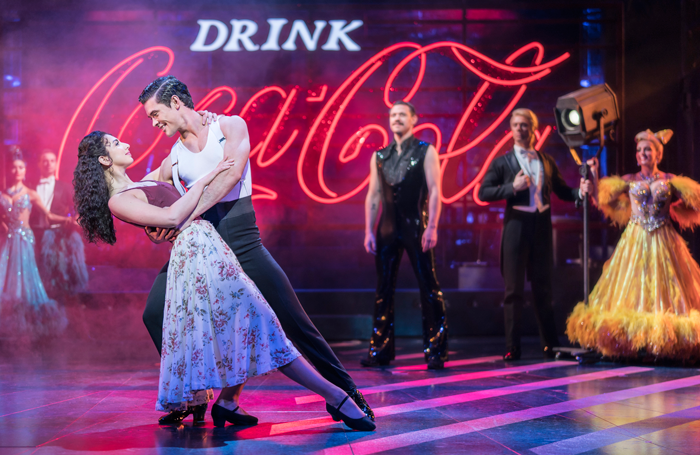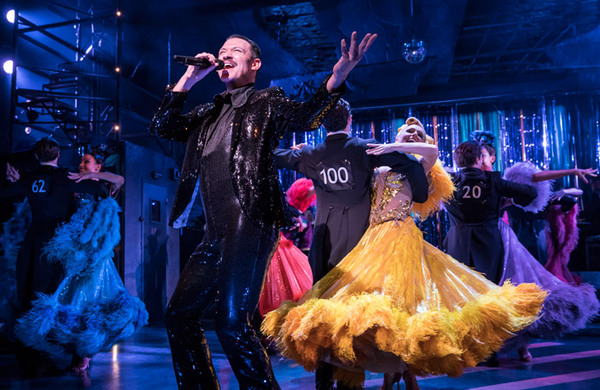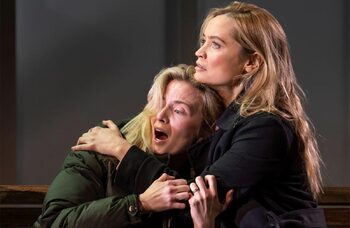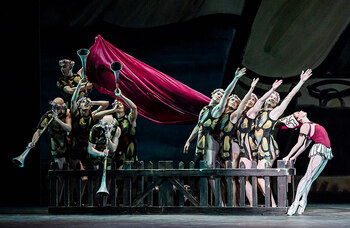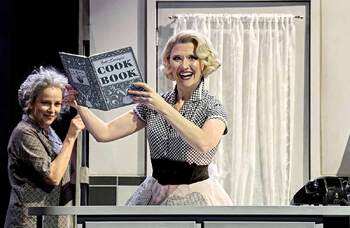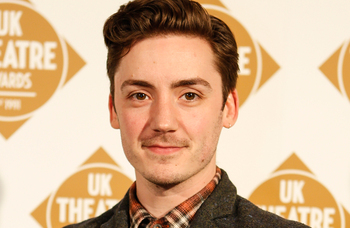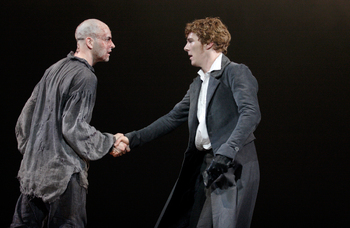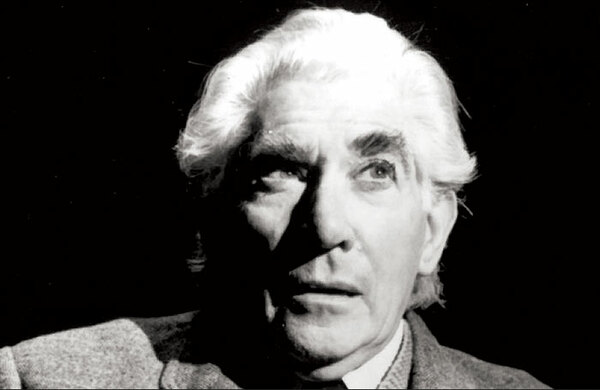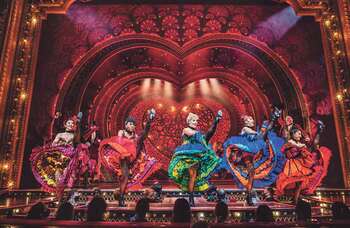Strictly Ballroom the Musical at Piccadilly Theatre, London – review round-up
Baz Luhrmann’s Strictly Ballroom began life in 1984 as a short student play, devised by Luhrmann and his classmates at Sydney’s National Institute of Dramatic Arts. Its success helped to launch Luhrmann’s sparkling career, and he returned to the story eight years later, making his screen directorial debut with the 1992 film version – the first instalment of his Red Curtain Trilogy, which would later include Romeo + Juliet and Moulin Rouge.
It returned to the stage in 2014 as a jazzed-up musical in Australia, turned up heavily reworked by Drew McOnie for its UK premiere at the West Yorkshire Playhouse in 2016, and has now been heavily reworked again for this, its West End premiere. It’s at the Piccadilly Theatre until October.
How Brit Drew McOnie reworked Australian film classic Strictly Ballroom
Director and choreographer McOnie’s show follows two outsiders as they battle against the strictures of Australian competitive ballroom dancing. It stars Jonny Labey, Zizi Strallen and Will Young, who does most of the singing as the evening’s glittering MC, waltzing his way through a jukebox playlist of hits, from Sting, to Bowie, to REM, to Whitney Houston.
But do the critics give Strictly Ballroom perfect tens? Does Drew McOnie’s direction bust out all the right moves? Or are we looking at a show with two left feet?
Fergus Morgan rounds up the reviews.
Strictly Ballroom the Musical – Strictly Silliness
When it first arrived on these shores at the West Yorkshire Playhouse in 2016, Strictly Ballroom the Musical left the critics cold. It was “energetic but clunky-looking” with “underdeveloped characters” and a story that was “a bit of a grind”, according to The Stage. It needed more emotional depth, the reviewers agreed. Does it fare any better rejigged in London?
Some critics think not. The evening is “bewilderingly vapid”, “relentlessly manufactured and cynically feelgood” according Dominic Cavendish (Telegraph, ★★), “an overextended and bloated cartoon” according to Matt Wolf (Arts Desk, ★★), and “never shows any real passion” according to Dominic Maxwell (Times, ★★).
“This new West End version is slack where it should be tight – crucially in its comedy – and slick where it should be loose,” says Tim Bano (The Stage, ★★). “It does a disservice to both of the film’s great strengths. The characters know that they and their world are grotesque, they play lines for laughs, and so suck the humour out of them. In trying so hard to be funny, the show comes across as cold and calculating instead.”
“I don’t know if it’s been spotted already, but Strictly Ballroom has strange parallels with Wagner’s Die Meistersinger,” chirps up Michael Billington (Guardian, ★★). “To be honest, I find more fun in Wagner than in this laborious attempt to turn a charming 1992 movie into a fully fledged stage musical.”
“It’s hard to be amused by a show so desperate to amuse,” agrees Maxwell, while Mark Shenton (London Theatre, ★★) labels Strictly Ballroom “a by-numbers (in every sense) jukebox show that’s part odd showcase for the camp karaoke song stylings of new star Will Young, and part double nostalgia-fest for people who enjoyed the film and old pop standards”.
“Gone is the easy charm of the film, to be replaced by a slightly desperate air of forced jollity beneath the amply applied fake tan,” writes Fiona Mountford (Evening Standard, ★★★).
Not everyone agrees. “If you get on board with its outrageous camp and gurning humour, the tale of maverick ballroom dancer who just wants to do his own steps – and the shy young Spanish dancer he takes on as his rookie partner – is also loads of fun,” points out Holly Williams (Independent, ★★★).
She’s not alone. Tony Peters (Radio Times, ★★★) calls it “a delicious and affectionate satire on the glitz, glamour and fake tan”, Alice Saville (Time Out, ★★★★) thinks it’s just a “very, very silly send-up of a much-loved movie”, and Marianka Swain (Broadway World, ★★★★) finds it “a fab-u-lous, feel-good pleasure.”
“The whole thing is done with enough self-teasing and infectious japery that the West End may have another successful morale-lifter on its hands,” concludes Quentin Letts (Daily Mail, ★★★★).
Strictly Ballroom the Musical – Strictly Sequins
 d3s3zh7icgjwgd.cloudfront.net/AfcTemp/MediaFiles/2018/04/26112943/Jonny-Labey-Lauren-Stroud-Will-Young-Michelle-Bishop-and-Gary-Watson-l-r-in-Strictly-Ballroom-The-Musical-100x65.png 100w,
d3s3zh7icgjwgd.cloudfront.net/AfcTemp/MediaFiles/2018/04/26112943/Jonny-Labey-Lauren-Stroud-Will-Young-Michelle-Bishop-and-Gary-Watson-l-r-in-Strictly-Ballroom-The-Musical-100x65.png 100w, 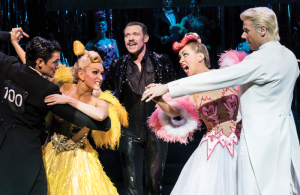
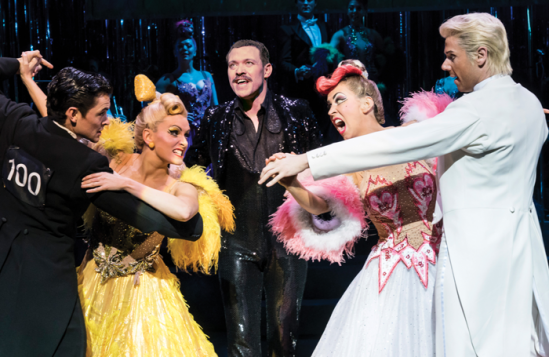
Strictly Ballroom’s story is bewilderingly banal for some, but frothy and fun for others. But how do the critics rate it on style alone? McOnie won an Olivier award for his choreography for In the Heights back in 2016 – will Strictly Ballroom be tangoing its way to award ceremonies as well?
“The show looks great,” concedes Bano. “Catherine Martin’s blindingly spangly, lurid costumes from the 1992 film are retained here. Every colour is turned up to maximum saturation levels, pools of shocking pink and neon green swirling around under Soutra Gilmour’s crumbling black set.”
“The entire confection is as garish as the bubblegum-hued ostrich-trimmed ballgowns the cast swirl about in,” agrees Williams. “The world of competitive ‘dance sport’ is rendered gleefully, grotesquely ghastly; grins plastered in place even as plasticky competitors swear viciously mid-competition. The Australian accents are fake as the tans.”
“The ballroom scenes are appropriately spectacular,” adds Saville. “The stage is flooded with couples wearing costume designer Catherine Martin’s masterful get-ups: each tinted a different rainbow hue, shimmering with sequins and gently vibrating ostrich feathers. The dancers smiles’ are as fixed and cartoonishly wide as a troupe of leaping dolphins.”
“McOnie has surrounded the action with a chorus of dancers in black tie and brilliant tulle, who waft around, overlooking events like ghosts from a dream, stepping into the action when required,” chimes Sarah Crompton (WhatsOnStage, ★★★★). “His choreography throughout is sensational and inventive; his direction fluent, keeping control of the frenzy.”
But there are those who aren’t swept away in this tidal wave of sashaying sequins, Wolf complaining of “a lot of strutting and squawking”, Maxwell calling the show “cluttered and restless”, and Shenton lambasting a “disappointingly flaccid and ultimately tacky spectacle.”
“Where the film had novelty and cinematographic elan, the theatrical spin-off contents itself with an abundance of blindingly garish costumes and the gurning caricature of types pushy, inept and twangingly accented,” writes Cavendish.
Strictly Ballroom the Musical – Strictly Starry
 d3s3zh7icgjwgd.cloudfront.net/AfcTemp/MediaFiles/2018/04/24152808/Will-Young-in-Strictly-Ballroom-The-Musical.-Photo-by-Johan-Persson-91x65.jpg 91w,
d3s3zh7icgjwgd.cloudfront.net/AfcTemp/MediaFiles/2018/04/24152808/Will-Young-in-Strictly-Ballroom-The-Musical.-Photo-by-Johan-Persson-91x65.jpg 91w, 
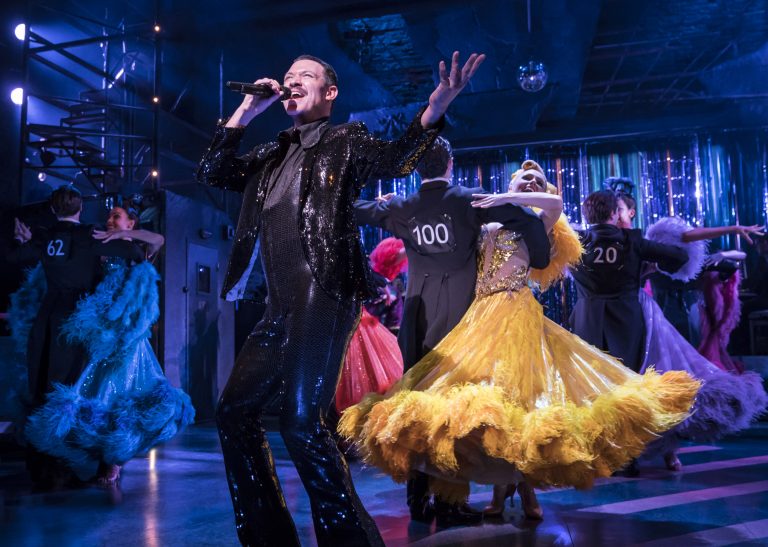
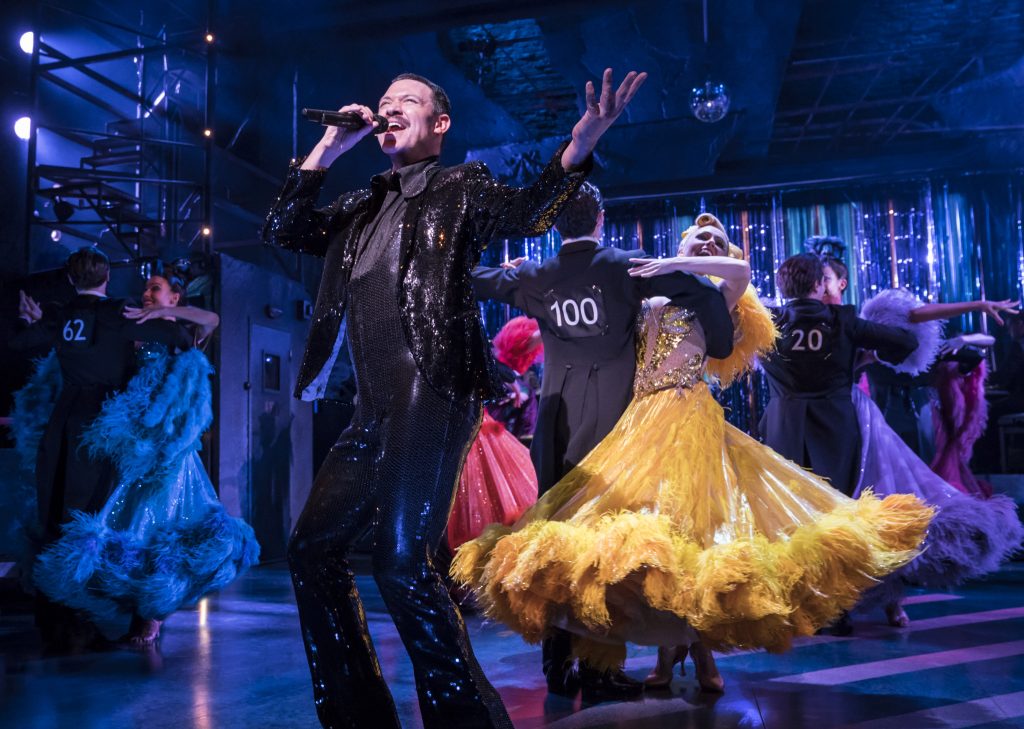
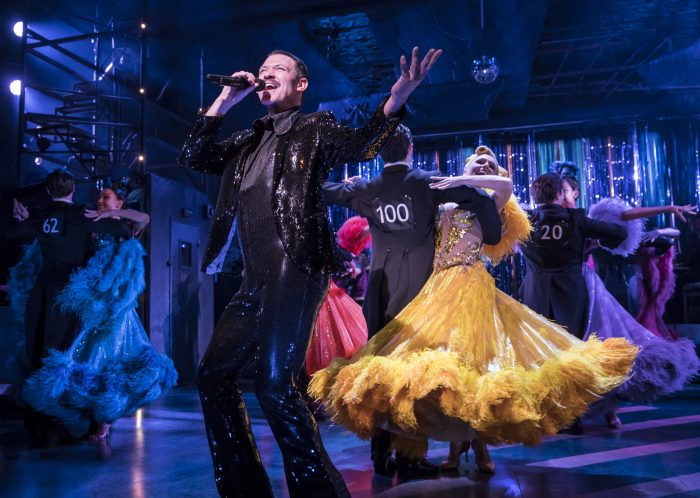
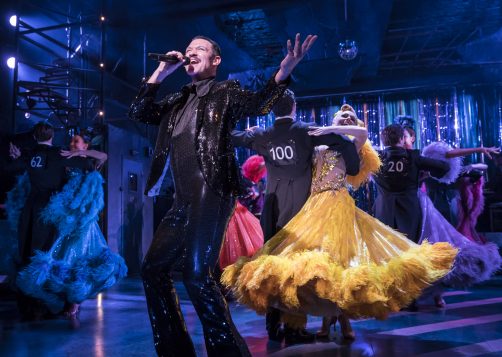
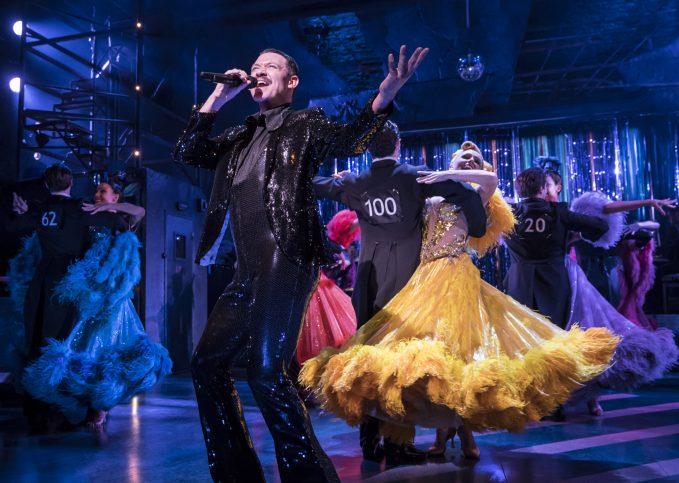
Some critics love it for its galling garishness. And others hate it for its galling garishness, too. But what do they make of the cast – Jonny Labey as a maverick dancer, Zizi Strallen as his shy, stumbling partner, and Will Young as… well, what is Will Young doing there?
“What, for heaven’s sake, are we to make of the omnipresent Will Young, who hovers in and around proceedings like some sort of diluted version of the Emcee he has played several times over in Cabaret?” asks Wolf. “Dressed in body-hugging black and sporting a vaguely sinister tache, Young’s Wally Stroud croons any number of songs to surprisingly little effect, as if even he weren’t sure how much to interpolate himself into proceedings that could easily do without him.”
“His presence is not really necessary,” agrees Bano. “He’s a character straight out of panto. Young talks to the audience and announces the location at the top of each scene. More importantly, he sings.”
 d3s3zh7icgjwgd.cloudfront.net/AfcTemp/MediaFiles/2018/04/26113237/Jonny-Labey-as-Scott-Hastings-in-Strictly-Ballroom-The-Musical-2-45x65.png 45w,
d3s3zh7icgjwgd.cloudfront.net/AfcTemp/MediaFiles/2018/04/26113237/Jonny-Labey-as-Scott-Hastings-in-Strictly-Ballroom-The-Musical-2-45x65.png 45w, 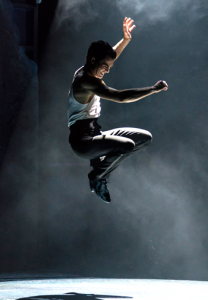
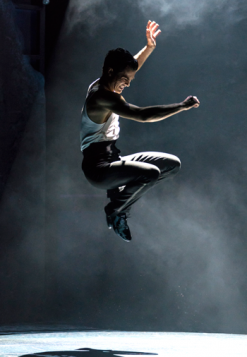
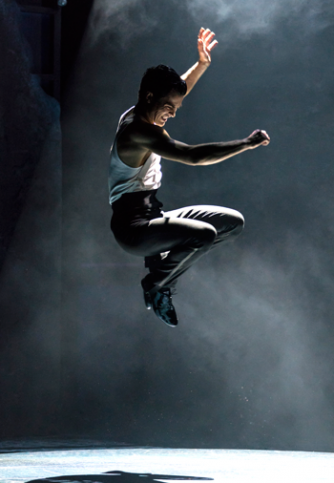
Others are slightly kinder to Young. His “voice can do it all” according to Saville, everything from “ethereal Whitney Houston covers” to “matinee-idol macho”, and according to Billington he’s got an “engaging presence”, and “in his sequined catsuit, resembles a louche version of Bruce Forsyth”.
“Yes, Will Young CAN sing – but the poor man, wearing a spangly top that makes him look like a version of Mr Mistoffelees from Cats, has to sing just about everything in the entire show, like a mix-tape accompaniment for every dance,” writes Shenton.
As for Labey, an EastEnders star and winner of ITV’s Dance Dance Dance, most critics agree that his dancing is certainly up to scratch, if not his acting. He’s “a bit smug, and so bit unendearing – though he is a fabulous dancer” according to Bano, and “can dance athletically, though he lacks much of a defining personality” according to Shenton.
Strallen – yet another Strallen sister – is perhaps the one thing the reviews agree on. For Peters she’s “an actor and dancer of outstanding talent”, for Crompton she’s “wonderfully rounded” and “dances like a dream”, and for Saville she “makes her mark with a lovable vein of physical comedy.”
“Her acting and dancing is impeccable,” concludes Mountford. “If she can sing as well as her older sisters, musical theatre actresses Scarlett and Summer, she has a very bright future on our stages.”
Strictly Ballroom the Musical – Is it any good?
 d3s3zh7icgjwgd.cloudfront.net/AfcTemp/MediaFiles/2018/04/26113453/Jonny-Labey-and-Zizi-Strallen-in-Strictly-Ballroom-The-Musical1-100x65.png 100w,
d3s3zh7icgjwgd.cloudfront.net/AfcTemp/MediaFiles/2018/04/26113453/Jonny-Labey-and-Zizi-Strallen-in-Strictly-Ballroom-The-Musical1-100x65.png 100w, 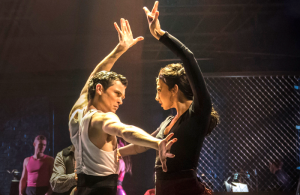
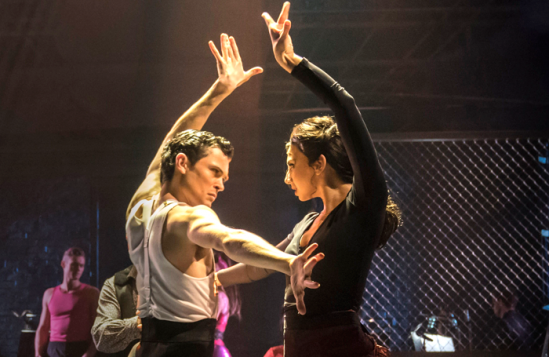
Strictly speaking, it’s not been showered with praise. Plenty of critics find precious little to love in this sequined story of competitive ballroom dancing. It’s cynical, manufactured, messy, and dramatically dead, say Bano, Shenton, Cavendish, Maxwell, Wolf and Billington, all of whom supply two-star reviews.
Others, though, are kinder. Yes, it’s garish. Yes, it’s ridiculous. Yes, it’s silly. But it knows that, and it’s just out to have a laugh. A few four-star write-ups point to a dance show that’s not totally out of step.
More about this person
More about this organisation
Most Read
Across The Stage this weekYour subscription helps ensure our journalism can continue
Invest in The Stage today with a subscription starting at just £7.99
